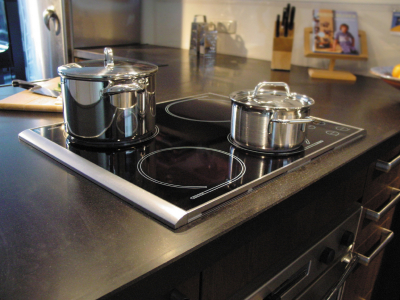Just like recipe writers seem to be out of touch with how long it takes to caramelize onions, I think they also are out of touch with a normal household's stove heat output.
Caveat: I wish I had a gas stove, but I am stuck with an electric. But my findings have been consistent over the last 4 - 5 electric stove tops I have had.
Almost every recipe I read calls for cooking over medium-high heat. My stove goes from 1.0 (low) to 10.0 (high). So if 5 is medium then medium-high would be 7.5. If I cooked anything at 7.5 I might burn my house down.
In practice, I can simmer at 2.8 - 3.0. I can pan fry around 3.5. If I take it up to 4, the oil gets too hot and the food burns.
I caramelize onions at 2.8. I'll heat them up initially at 3.5 until they are going good and then drop down to 3. After a while even this is too hot and I'll drop them to 2.8. If left on at 3.5 or 4 they will quickly sound like I am deep frying a turkey.
Beans/stews/soups/chili can be brought up to simmer at 4.0, but then it better be dropped down to 2.8 or 3.0 or it will be at a high boil and make a huge mess.
The only thing I ever take above 5 is if I am boiling water for pasta. Once boiling I still have to drop it down or it will boil over. When making kids Kraft mac & cheese a 6.5 will hold a hard roiling boil. A 7.0 or above will definitely boil over.
So why does everything call for a medium-high heat? Perhaps the temperature of my 3.5 is considered medium-high in the culinary world. But if so, then why the heck are appliance makers installing potential death traps in everyone's kitchen?
Caveat: I wish I had a gas stove, but I am stuck with an electric. But my findings have been consistent over the last 4 - 5 electric stove tops I have had.
Almost every recipe I read calls for cooking over medium-high heat. My stove goes from 1.0 (low) to 10.0 (high). So if 5 is medium then medium-high would be 7.5. If I cooked anything at 7.5 I might burn my house down.
In practice, I can simmer at 2.8 - 3.0. I can pan fry around 3.5. If I take it up to 4, the oil gets too hot and the food burns.
I caramelize onions at 2.8. I'll heat them up initially at 3.5 until they are going good and then drop down to 3. After a while even this is too hot and I'll drop them to 2.8. If left on at 3.5 or 4 they will quickly sound like I am deep frying a turkey.
Beans/stews/soups/chili can be brought up to simmer at 4.0, but then it better be dropped down to 2.8 or 3.0 or it will be at a high boil and make a huge mess.
The only thing I ever take above 5 is if I am boiling water for pasta. Once boiling I still have to drop it down or it will boil over. When making kids Kraft mac & cheese a 6.5 will hold a hard roiling boil. A 7.0 or above will definitely boil over.
So why does everything call for a medium-high heat? Perhaps the temperature of my 3.5 is considered medium-high in the culinary world. But if so, then why the heck are appliance makers installing potential death traps in everyone's kitchen?

